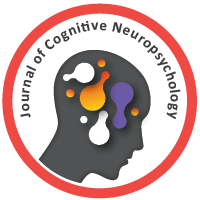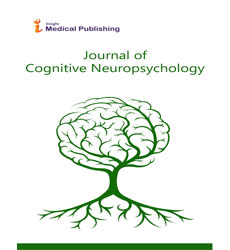Attention and Executive Dysfunction in Neurodegenerative Disorders
*Corresponding author:
Patton Smith,
Department of Developmental and Educational Psychology, University of Malaga, Malaga, Spain;
E-mail: smith.patton@malaga.sp
Received date: January 02, 2025, Manuscript No. ipcn-25-20478; Editor assigned date: January 04, 2025, PreQC No. ipcn-25-20478 (PQ); Reviewed date: January 16, 2025, QC No. ipcn-25-20478; Revised date: January 23, 2025, Manuscript No. ipcn-25-20478 (R); Published date: January 30, 2025, DOI: 10.36648/IPCN.9.1.004
Citation: Smith P (2025) Attention and Executive Dysfunction in Neurodegenerative Disorders. J Cogntv Neuropsych Vol: 9 No: 1.4
Introduction
Attention and executive functions are critical components of human cognition that allow individuals to focus on relevant information, inhibit distractions, plan, solve problems, and adapt flexibly to changing environments. These functions depend heavily on large-scale brain networks, particularly those involving the prefrontal cortex, parietal regions, and subcortical structures. In neurodegenerative disorders, progressive neuronal loss disrupts these networks, leading to deficits in both attentional control and executive functioning. Such impairments often appear early in the disease course, even before memory or motor symptoms, and they significantly interfere with independence, decision-making, and quality of life.Cognitive neuropsychology provides a framework to understand how attention and executive dysfunction arise from selective brain degeneration. Through the study of clinical syndromes such as Alzheimerâ??s disease, Parkinsonâ??s disease, Huntingtonâ??s disease, and frontotemporal dementia, researchers have been able to identify specific neural mechanisms underlying these deficits. These insights not only advance our theoretical understanding of neurocognitive processes but also guide diagnostic tools and therapeutic strategies aimed at mitigating the impact of cognitive decline in affected individuals [1].
Description
Attention is a multifaceted construct encompassing sustained, selective, divided, and shifting attention. In Alzheimerâ??s Disease (AD), deficits in sustained and selective attention often emerge in the early stages, contributing to difficulties in focusing on tasks or filtering out irrelevant stimuli. These impairments are linked to degeneration in parietal and frontal cortical regions as well as cholinergic dysfunction in subcortical pathways. Parkinsonâ??s Disease (PD) is similarly associated with attentional impairments, particularly in divided attention and set-shifting, as the dopaminergic deficits characteristic of PD disrupt frontostriatal circuits. Patients often report â??mental fatigue,â? reflecting difficulty maintaining attention over time. Huntingtonâ??s Disease (HD) also produces attentional decline, particularly in dual-task performance, due to basal ganglia involvement. These findings suggest that attentional control relies on the integrity of distributed cortical subcortical networks, and disruption of these systems in neurodegenerative conditions produces distinctive attentional profiles [2].
Executive dysfunction encompasses deficits in planning, working memory, problem-solving, inhibition, and cognitive flexibility. In AD, patients often show impaired planning and problem-solving even before severe memory decline, reflecting dysfunction in the prefrontal cortex and its connectivity with parietal regions. In PD, executive deficits manifest as slowed cognitive processing, impaired working memory, and difficulties in task switching, consistent with frontostriatal circuit disruption caused by dopamine depletion. HD is particularly marked by disinhibition and poor impulse control, aligning with degeneration in both the prefrontal cortex and basal ganglia. Frontotemporal Dementia (FTD), especially the behavioral variant (bvFTD), produces some of the most severe executive dysfunction, including impaired judgment, loss of empathy, and socially inappropriate behavior due to prominent degeneration of the orbitofrontal and dorsolateral prefrontal cortices. The variability across disorders demonstrates that different neurodegenerative pathologies disrupt executive control through distinct but overlapping neural mechanisms [3].
Attention and executive impairments are among the most disabling cognitive symptoms of neurodegenerative disorders, as they affect every day functioning, autonomy, and caregiver burden. For example, deficits in divided attention or task-switching increase the risk of accidents in activities such as driving. Executive dysfunction impairs medication management, financial planning, and the ability to follow complex instructions, leading to dependence on caregivers. These impairments also exacerbate other cognitive deficits; in AD, executive dysfunction can worsen memory performance by reducing the ability to employ compensatory strategies. In PD and HD, impaired inhibition contributes to impulsive behaviors; while in FTD, poor judgment and lack of social control create significant interpersonal challenges. Clinical recognition of these symptoms is essential for early diagnosis, as attentional and executive changes may precede or even overshadow memory and motor symptoms in certain disorders [4].
Neuropsychological assessment is crucial for identifying attentional and executive deficits in neurodegenerative disorders. Standardized tests such as the Stroop Test, Trail Making Test, Wisconsin Card Sorting Test, and Tower of London are commonly used to assess inhibition, set-shifting, planning, and problem-solving. Early detection of impairments through these assessments can inform diagnosis and help differentiate between disorders (e.g., distinguishing FTD from AD). Management strategies are multifaceted, combining pharmacological and non-pharmacological interventions. Cholinesterase inhibitors used in AD can modestly improve attention, while dopaminergic treatments in PD may alleviate some executive symptoms. Cognitive training programs that target attention and executive functions, along with compensatory strategies (e.g., external reminders, task simplification), can enhance daily functioning. Emerging approaches such as non-invasive brain stimulation and computerized adaptive training show promise in modulating neural networks and improving cognitive control. Effective management requires integrating neuropsychological insights into patient-centered care, with interventions tailored to the specific disorder and individual needs. [5].
Conclusion
Attention and executive dysfunction are pervasive and debilitating features of neurodegenerative disorders, reflecting the breakdown of complex cortical subcortical networks involving the prefrontal cortex, parietal regions, and basal ganglia. Cognitive neuropsychology has played a central role in identifying the brain behavior relationships underlying these impairments, clarifying why they manifest differently across conditions such as Alzheimerâ??s disease, Parkinsonâ??s disease, Huntingtonâ??s disease, and frontotemporal dementia. These insights not only advance theoretical models of cognition but also inform clinical diagnosis, management, and intervention strategies. As neurodegenerative diseases continue to rise in prevalence globally, addressing attentional and executive impairments will remain a priority for improving patient quality of life and reducing caregiver burden. Ultimately, an integrative approach that combines neuropsychological assessment, targeted therapies, and emerging neuroscientific methods offers the most promising path toward mitigating the cognitive impact of these devastating conditions.
Acknowledgment
None.
Conflict of Interest
None.
References
- Pino A, Fumagalli G, Bifari F, Decimo I (2017). New neurons in adult brain: distribution, molecular mechanisms and therapies. Biochem Pharmacol141, 4-22.
Google Scholar Cross Ref Indexed at
- Ganat YM, Silbereis J, Cave C, Ngu H, Anderson GM, et al. (2006). Early postnatal astroglial cells produce multilineage precursors and neural stem cells in vivo. Neurosci, 26: 8609-8621.
Google Scholar Cross Ref Indexed at
- Przedborski S, Vila M, Jackson-Lewis V (2003). Series Introduction: Neurodegeneration: What is it and where are we?. J Clin Investig 111(1), 3-10.
Google Scholar Cross Ref Indexed at
- Hoover BR, Reed MN, Su J, Penrod RD, Kotilinek LA, et al. (2010). Tau mislocalization to dendritic spines mediates synaptic dysfunction independently of neurodegeneration. Neuron 68: 1067-1081.
Google Scholar Cross Ref Indexed at
- Milnerwood AJ, Raymond LA (2010). Early synaptic pathophysiology in neurodegeneration: Insights from Huntington's disease. Trends Neurosci 33: 513-523.

Open Access Journals
- Aquaculture & Veterinary Science
- Chemistry & Chemical Sciences
- Clinical Sciences
- Engineering
- General Science
- Genetics & Molecular Biology
- Health Care & Nursing
- Immunology & Microbiology
- Materials Science
- Mathematics & Physics
- Medical Sciences
- Neurology & Psychiatry
- Oncology & Cancer Science
- Pharmaceutical Sciences
